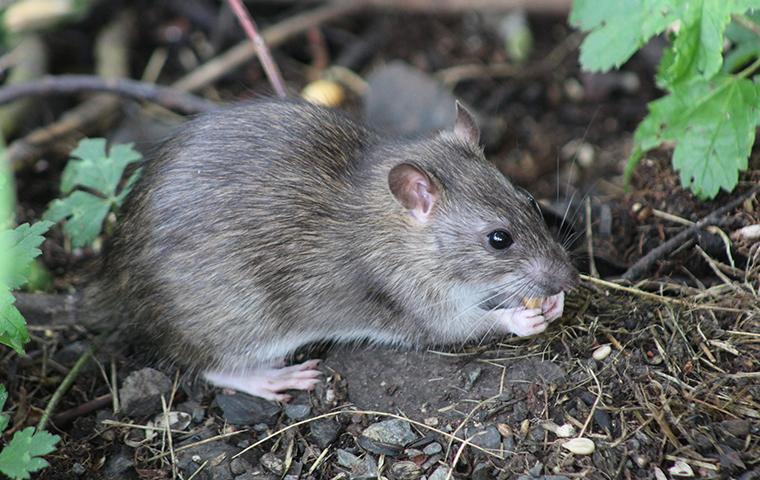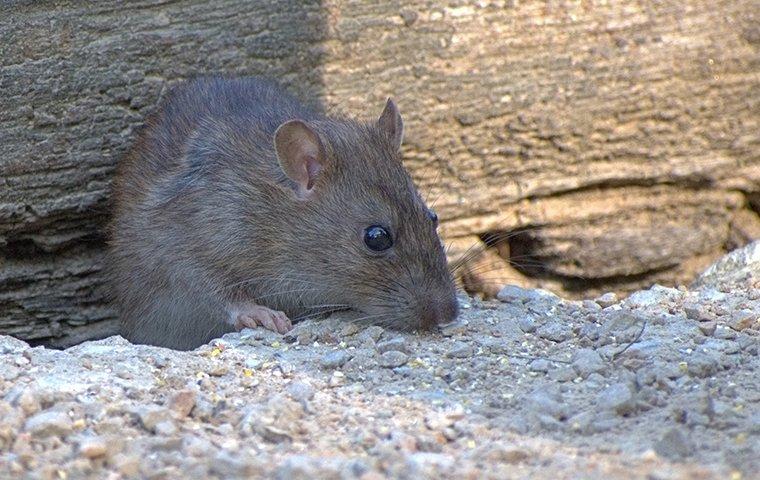Are Rodents Causing You Headaches In The Bay Area?

Waking up with a headache is not fun, especially when you have to go to work and don't have any paid time off. When you get out of bed feeling dizzy and groggy, you desire to return to bed but can't. So, you muster the energy and willpower for the day while hoping the headache medicine quickly works. We don't want headaches because they sap energy and ruin your day. Most people take medicine upon getting a headache to make it go away as fast as possible. If the medication works, you feel better, your energy returns, and you have a new lease on life for the rest of the day.
We use the word headache to describe a hurting head, but we also use it to describe anything that causes us grief and pain. For example, you may say that a project at work was a real headache or that a co-worker is a headache. When we say a person, project, or thing is a headache, we say they are a problem, a pain, and something we'd prefer to avoid.
Not only can we classify people and things as headaches, but rodents in our houses are a headache. When rats or mice are scurrying throughout the house, we get anxious and fearful because we don't know when we might stumble upon a rat or mouse. Get the Bay Area pest control team from Bay Pest if rodents are giving you a headache. We combine our over 40 years of pest control experience and passion for customer service to provide you with the Bay's best in pest control. We will remove rodents from your house.
How To Identify Common Types Of Rodents In The Bay Area

Rats and mice are two types of rodents infesting Bay Area homes. Because these rodents are similar many don't know the kind of animal in their house; however, despite their similarities, they have some marked differences.
Rodents tend to forage at night while you sleep, so you may not always see a rat or mouse, but they leave droppings behind, and the feces can help identify the animal that is damaging foods in the pantry. Mice deposit brown pellet-like droppings with pointed ends about 1/8 to 1/4 inch long; rats produce black olive-sized rod-shaped feces with blunt ends.
Another thing to consider in your investigation is the location of the droppings. Roof rats (also known as black rats or ship rats) tend to reside in the attic and upper areas of the home. Droppings in the attic or tops of cabinets are indicative of this rat species. Although there are exceptions, Norway rats and house mice tend to nest in basements and lower floors of a house. So, the size of the droppings underneath furniture and appliances or alongside the baseboard, objects, or cabinets points will help you determine if Norway rats or house mice are in your Bay Area home.
Mice and rats have oily fur that attracts dust, dirt, and grim as they forage in sewage, garbage cans, compost piles, and animal feces. Both rodent species have poor eyesight and rely on their whiskers and other senses to guide them as they travel through houses. Due to their poor vision, rats and mice bump against walls and objects and leave smudge marks on the surfaces from their dirty coat. Because rats have round, thick bodies, they leave larger and thicker dirt deposits than house mice. Again, roof rats will likely leave streaks in the upper rooms, cabinets, or attic, but the other rodents will deposit them on the ground floor. The area where you find the marks combined with the size of the streaks indicates rats or mice and the possible rat species.
Rodents leave four and five-toed tracks in dusty areas of the house or yard. Rat prints from the hind feet are 3/4 to 1 inch each, and mice tracks measure approximately 3/8 inches or less. The location and size of the footprints will help identify the rodent. If you believe you know the area they infest but do not see tracks, sprinkle talcum powder in the location and wait a couple of days to see if prints appear.
Discarded food and the food type will help you identify these California rodents in your Bay Area home. Mice nibble throughout the day and spread food crumbs around their nesting locations; rats eat at the source but will scatter shells and inedibles around the area. If you see nut shells and inedible foods, you likely have a rat infestation; remember to consider the location of the discarded food.
The location of sounds indicates the type of rodent in your Bay Area home. Sounds in the attic indicate roof rats, but noises from the walls, underneath appliances, and in the basement are Norway rats or house mice. If you find these indications in your investigation, you need rodent pest control services from Bay Pest.
The Dangerous Diseases Rodents Are Known To Spread
Rodents are furry, have big black eyes, whiskers, and cute little ears, and although some people domesticate them, wild rodents are detrimental to homeowners. Rodents enter homes from the outdoors, where they scavenge for food in sewers, drains, garbage containers, and compost piles. Rats and mice also eat and walk on animal feces.
When they live in these filthy areas, their oily fur attracts not only the dirt but also the bacteria, viruses, and parasitic worms lying on the surface. All rats may transmit rat-bite fever. Like house mice, they can also spread leptospirosis, tularemia, and salmonellosis. House mice can also carry the viral infection, lymphocytic choriomeningitis (LCM).
In addition to picking up filth and disease-causing organisms on their fur, rodents also become transporters for fleas, ticks, mice, and lice that live in these areas. Ticks are insects that bite and can contaminate pets and people with pathogens leading to Lyme disease. Rocky Mountain spotted fever, Powassan virus, and other illnesses depending on the type of tick. Fleas are vectors for murine typhus, tungiasis, bartonellosis, and tapeworm.
Various ways to contract diseases from rodents include touching a dead rodent with unprotected hands, droppings, urine, saliva, and a bite from a live rodent, fleas, or ticks. While you will see droppings in kitchen cabinets, drawers, and countertops, you may not notice dried urine and saliva on utensils, eating, and cooking surfaces. Another way pathogens may spread undetected is through airborne particles from dried feces. As the dark droppings dry, they turn grey and flake away. When a young child or an elderly household member inhales the particulates, they can trigger an allergic reaction or asthma attack.
One reason for classifying rats and mice as rodents are that they possess an upper and lower pair of constantly growing incisor teeth. To avoid the teeth from overtaking their mouths, they must continually gnaw on objects to trim the teeth and sharpen them. Rodents chew on wood, plastic, thin metals, and just about anything else; they cause damage to furniture, storage containers, and other items. Electrical wiring is a particular concern because rodents chew the wires creating short circuits and, in some cases, sparking fires. Rats and mice also gnaw through internet and phone lines disrupting internet service, which stops the ability to work from home.
The effective rodent control provided by Bay Pest protects your family and Bay Area house from diseases and damage caused by rats and mice.
Why It Is So Hard To Get Rid Of Rodents On Your Own
Rats and mice are prolific breeders. A female mouse begins breeding 40 days after its birth and will produce 12 liters annually with an average of five or six pinkies per liter. The pinkies leave the nest within three weeks of delivery and move through the house. Can you imagine how many mice you can have in a short time if just three female mice are actively reproducing?
Did you know that, like a mouse, a female rat will start breeding within 45 days of its birth? The female rats will mate within 18 hours of being born. Each litter of Norway rats has an average of seven pups, and a female rat produces about eight liters for an average of 56 offspring yearly from one rat. Roof rats are not much better; they produce up to 40 offspring annually.
It is understandable why many homeowners rush to purchase traps upon seeing a rodent in the house; however, considering the reproduction rate, you can see that a couple of snares will not get rid of rodents. Bay Pest is successful where DIY traps fail because we know the habits of rodents and where to place traps strategically.
The Most Effective Way To Get Rid Of Rodents In Your Home
Due to their quick reproduction rate, tendency to create nests in dark, secluded areas of the house, and nocturnal habits, it is difficult to stop a rodent invasion. The good news is that Bay Pest provides rodent control in the Bay Area.
When you schedule a visit, our highly-trained technician will inspect your house to determine the rodent type, hot spots, entry points, and attractions. Our service technician will create a plan to remove the rodents using a combination of one-way doors, traps, glue boards, and other tools designed to stop rodents. To help prevent future rodent infestations, we provide exclusion services. Because protection is our top priority, we sanitize the infestation areas once we eradicate the rodents from the premises. Contact us today to learn more and to get a free estimate.

Pest Control with a Personal Touch
Why Our Service Makes the Difference
-
Results-Driven
Unlimited follow-ups for 30 days after each service ensures optimal results.
-
Customizable ServiceWe customize the service and frequency to meet your Pest Control needs.
-
40+ Years of ExperienceWith over 40 years of experience, we're your best bet for Pest Control in the Bay Area.
-
Licensed, Insured, Vetted ProsEntrust your pest control needs to licensed, insured professionals.

A member of our team will be in touch shortly to confirm your contact details or address questions you may have.

Hear From Our Happy Customers
At Bay Pest Solution Inc, your satisfaction is our priority! See for yourself what our customers have to say about working with us.
-
"Great job handling pest removal!"
I would recommend Bay Pest Solution to everyone! They have done a great job handling all our pest removal issues. I'm always ...
- Denise S. -
"Friendly, punctual, thorough service"
So glad to be customers of Bay Pest Solution Inc.! They are very friendly, punctual, and thorough. Despite many other pest ...
- Alivia D. -
"Fantastic service, very professional."
As a real estate professional in the Bay Area, Bay Pest Solution Inc. is my go-to for anything pest-related. Fantastic ...
- Calmin C. -
"Full Satisfaction"
Would definitely work with them again in the future.
- Ross W. -
"Extremely Happy"
Their price on it was good and no contract.
- Ronald B. -
"Professional & Honest"
Bay Pest was the first to listen and very quickly gave me options on termination.
- Cindy B. -
"Very Knowledgeable"
Good communication, timely, friendly, great follow-up.
- Carter C. -
"Service Was Great"
Easy communication, friendly and helpful and they got the job done in one go.
- Charity S.



.png)

.2410210839369.jpg)
.2410210843007.jpg)